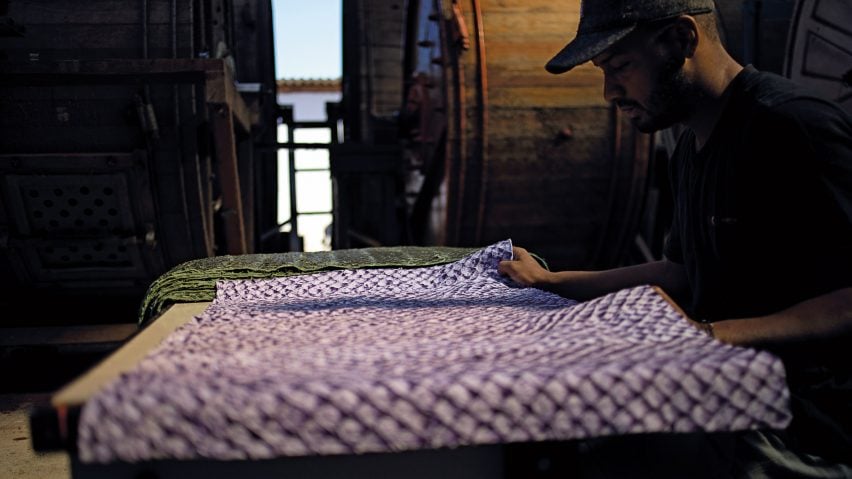Brazilian designer Oskar Metsavaht has repurposed the skins from the pirarucu fish found in Amazonian rivers and lakes by transforming it into sustainable scaly garments and fashion accessories.
The designer developed the fish skin material as an alternative to traditional bovine leather, which is harmful to the environment, with cattle ranching being one of the biggest causes of deforestation in the Amazon rainforest.
The pirarucu fish has been a staple diet amongst people in the north of Brazil for centuries, but they typically discard the skins after eating it.
Metsavaht, who founded Brazilian fashion brand Osklen, decided to put the wasted skin to good use to create a "new luxury", with a series of ready-to-wear garments like jackets and accessories such as handbags that "bring together aesthetics and ethics".
As well as being environmentally friendly, pirarucu skin is also more resilient than bovine leather, despite being thinner and softer, and is therefore well-suited to items that see a lot of use.
Osklen buys the fish skins exclusively from communities that work alongside sustainably-managed fisheries, where the fish can only be caught once they reach a certain size of over 1.5 metres, and only 20 per cent of the species can be taken from each lake.
The fish is then transported to a tannery where the skin is processed and treated, and delivered to Osklen's suppliers where it is turned into a viable luxury material to make fashion items including shoes, wallets and bags.
"We believe the world can't handle any more waste. Moreover, there's no sense in creating products made from virgin materials," said the brand.
"We are exploiting the planet's resources to its very limits when we can find and repurpose materials and by-products that already exist, instead of throwing them away."
The brand also sees the repurposing of the pirarucu skin as having a positive social impact as well as an environmental one. The material is handmade by local artisans, so generates extra jobs and income for the fishermen and their families who, instead of just selling the meat, can also sell the skin.
"Contemporary thinking in terms of forest preservation is essential in order to empower the people living there to have both a sustainable way of life and income without exploiting the Amazon itself," said Osklen.
According to the brand, the fish skin was difficult to sell in the beginning, as it was not appealing to all of their consumers. "We only got it to happen because we were able to communicate the sustainability of the product, and to position it as an innovative material of the future," said Osklen.
"Even if the skin was not economic to produce, we would keep it in our collections each season as a way to develop the material in order to show its growth and potential," it continued.
Design Academy Eindhoven graduate Billie van Katwijk also created a sustainable alternative to leather by developing a process for turning bovine guts into a material that can be used to make bags and accessories, after discovering that cows stomachs are considered a waste material, so are usually thrown away.

